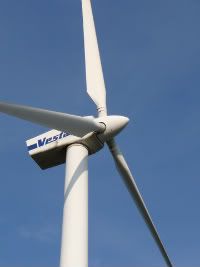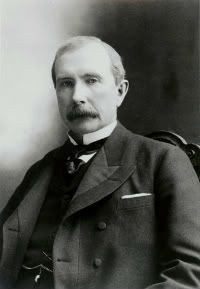Here’s a piece from Kentucky-based consulting engineer and frequent commenter John Robbins, who provides some sobering remarks on the truth behind our current push for renewables.
Last week, I was one of 3 teaching a professional seminar about Passivhaus. In case you don’t know, that program (from Germany) actually sets serious (aka “difficult to achieve”) limits on heating, cooling and overall annual energy, also on how much HVAC heating and cooling capacity which can be installed. All that WITHOUT offsets from RE grid-tied storage-free energy. Only main negative about Passivhaus is that it gives certification based on design and construction, like LEED and EnergyStar. None of these popular programs actually require post-occupancy data to verify that designs work as estimated.
The best part of Passivhaus is it separates “reducing demand and use” from achieving net-zero by offsets like grid-tied storage-free RE as is permitted in LEED. I’ve seen new LEED homes in Cincinnati which are merely minimum-code designs with PV on the roof for offsets. With Cincinnati now offering a 15-yr property tax abatement for LEED structures and the local electric utility paying sRECs for grid-tied RE, homebuyers, their designers and builders are pretty much avoiding energy reductions and heading straight to RE offsets. There’s even new “creative” marketing lingo to describe the economics, “net-zero energy cost” – net-zero cost achieved by offsetting actual energy costs with sRECs and tax abatements. None of this would fly in Passivhaus. More importantly, these situations do not represent much reduction in demand for conventional energy, since Cincinnati is a 50% cloudy location, with windy winters but stagnant-air summers. Solar and wind can work here, but certainly not full-time, so structures with grid-tied RE have their un-reduced energy loads carried by conventional energy much of the time, maybe as much as 80% of the time.
We are seeing so much morphing of RE advocacy into marketing. I guess the 1st wave was for/by us who were educated and motivated prior to or away from the current subsidy hoopla. The massive current subsidies seem to attract folks who aren’t really much interested in the traditional movement (aka “less coal, oil and nuke”) but instead need heavy financial incentives to act. Regardless of why or what, as a very aware member of Assn of Energy Engineers where real energy matters are known and discussed regularly, I worry we are seeing so much money, marketing and reporting about nonrealities in our energy world. Even tracking %RE is the wrong thing to track.
As I wrote in an op-ed in SOLAR TODAY a half-dozen years ago, implementers should be tracking how much less conventional energy they demand and use, not how much of what solutions we buy or apply. I wish we tracked how much energy use and when it is used, separately from how much and when we have RE. The net-energy approach has simplified the process for consumers but made the education process more complicated. A utility company rep whose company was co-sponsoring a workshop I taught last year in south-central KY took offense when I told my students about this. All my students rated my class very good to excellent, but the utility rated it poor to very poor, adding that it would never sponsor any of my events in the future. Similarly, a solar installer I know in central KY told me last year that when he mentions efficiency to his callers interested in a solar bid, the most common result is a lost sale or lost opportunity to bid. So while my message is correct, very similar indeed to what we’ve heard for decades from Amory Lovins, it is a message very unpopular with many consumers and utilities, also many of our governments.
I include governments because of an experience I had in Ohio where I proposed how to cut residential energy use by a whopping %, but got no positive responses from the panel representing Ohio government. A professor of economics from Miami University of Ohio pulled me aside after my presentation and told me that Ohio historically forms energy policies not as much based on consumers or energy as how much potential for tax collection. Like most states, Ohio collects a lot of taxes on conventional energy. Also like most states, Ohio’s income tax rates are progressive, going up as incomes rise. The professor said insulators’, caulkers’ and window installers’ wages are tiny compared to union coal miners, utility workers, geothermal and solar installers. He said this is why Ohio incentive plans subsidize the most expensive (higher sales taxes) and most high-wage energy systems. He said this is also why we never see energy-use reduction targets and timelines.
So we cannot be naive and think we are currently implementing or describing THE ENERGY SOLUTIONS which will substantially cut coal and nuke reliance. The current round of RE seems most abt promoting and expanding the RE retail and manufacturing sectors, which is certainly needed. But that is not the same as solving our reliance on conventional energies, especially coal, oil and nuke. As said before, I and my most committed 1st-wave customers and contacts are focused mostly on reducing reliance on coal, oil and nuke. The failure of RE’s “new wave” to understand and address this, especially to accomplish any real conventional reductions, will one day come back to haunt, maybe to backlash.
I asked a colleague attending the midwest USGBC conference last week in Cincinnati how many coal and nuke powerplants will be running if all homes and buildings are net-zero by 2030? He did not respond quickly. So I said, maybe most that are running right now, maybe even more. Nobody really knows, but what we know for sure is that net-zero is a merely a marketing term applied usually to part-time intermittent mostly-daytime RE surpluses applied as offsets against full-time 24-hr-per-day power use. Baseload powerplants like nukes and large coal-fired generators cannot be turned on and off quickly. Even coal-fired needs 10 hrs or more to shutdown and restart. Nukes need days. That’s why they are used for baseloads. To reduce baseload generation, we need aggressive full-time load reduction.
The positive thing is this is possible, already demonstrated, even well written about. We just need leadership and education to keep the information in front of governments, consumers and businesses as they consider the issues and options. As a once-home-designer who now has very little design work in this continuing recession, I’m developing new workshops and writings to educate consumers, designers, contractors, teachers and anybody else who is interested. However, I must report that I do not get or hear much interest from younger people and companies in the RE sector. I suspect that’s because they are busy. After all, there are huge amounts of subsidies in my region going to RE retailers and contractors. That sector is certainly not in recession.




![[The Vector] Nuclear Madness](http://2greenenergy.com/wp-content/uploads/2011/06/Nuclear-photo.bmp) While many in the world are rejecting, stalling or abandoning nuclear power, what about the U.S.? Why should the U.S. consider abandoning nuclear? What are a number of experts saying about the nuclear industry in the U.S., and its future? That it is problematic, contentious and not well thought-out. The Obama Administration proposed $36 billion in Treasury-backed loan guarantees for new reactors, which is controversial in itself on many fronts.
While many in the world are rejecting, stalling or abandoning nuclear power, what about the U.S.? Why should the U.S. consider abandoning nuclear? What are a number of experts saying about the nuclear industry in the U.S., and its future? That it is problematic, contentious and not well thought-out. The Obama Administration proposed $36 billion in Treasury-backed loan guarantees for new reactors, which is controversial in itself on many fronts.


 Occasionally I wonder why I spend so much time blogging on the energy industry — not because I think what I do is inconsequential, but because I come across someone whose message — or level of talent in delivering that message — is so superior to mine that I feel like I’m coming on stage to play rock guitar a few minutes after Jimi Hendrix just sat down.
Occasionally I wonder why I spend so much time blogging on the energy industry — not because I think what I do is inconsequential, but because I come across someone whose message — or level of talent in delivering that message — is so superior to mine that I feel like I’m coming on stage to play rock guitar a few minutes after Jimi Hendrix just sat down.